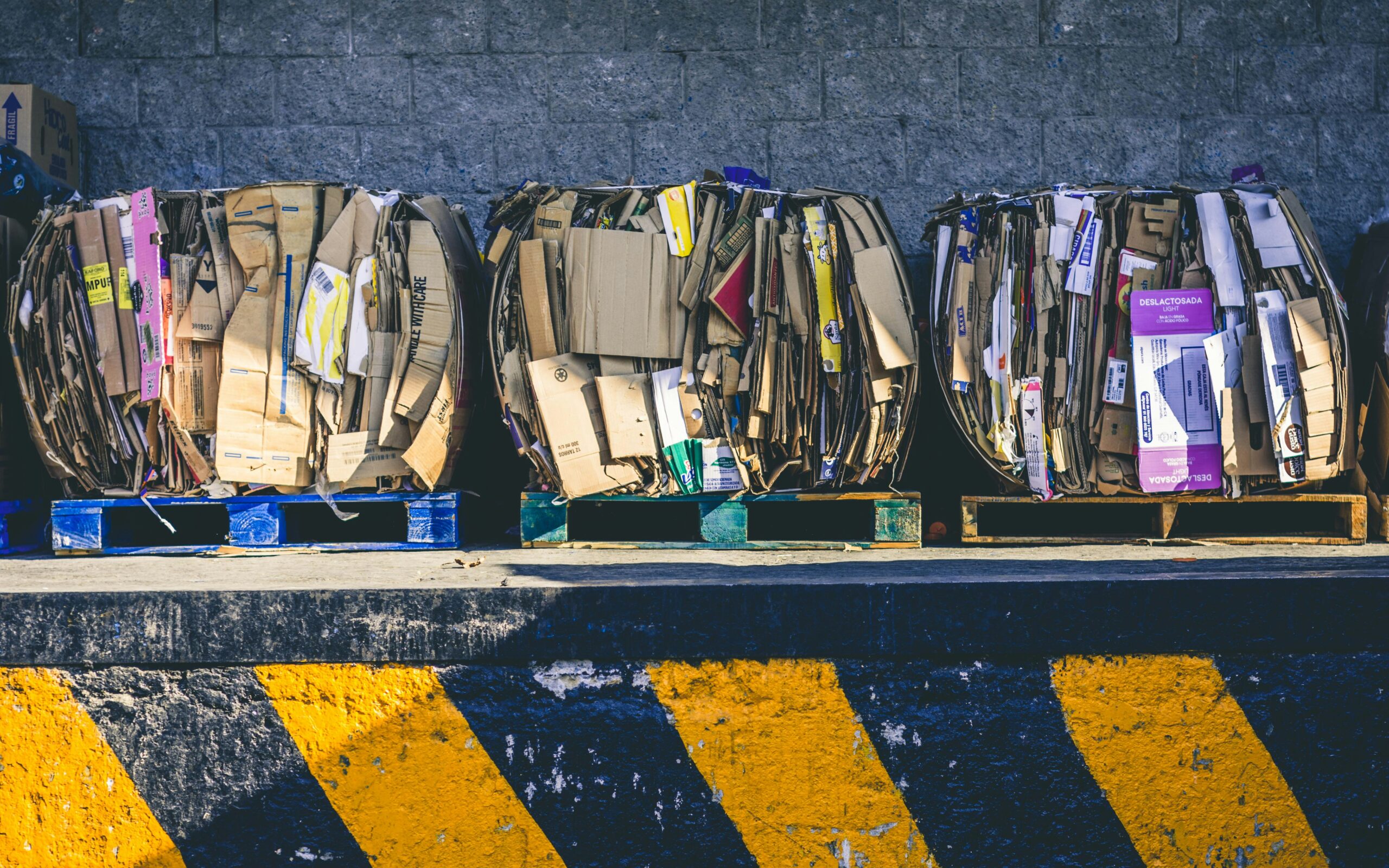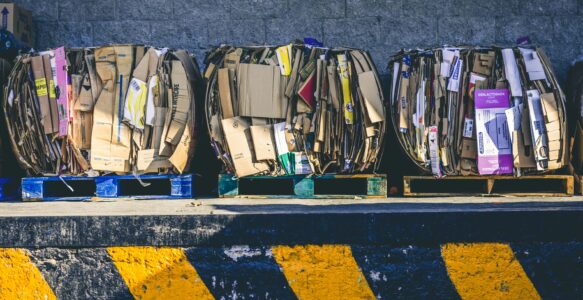The holiday season is upon us, a time of joy, celebration, and unfortunately, excessive waste. Christmas alone contributes to a significant increase in packaging waste, from elaborately wrapped gifts to disposable decorations. While these items may bring temporary joy, their long-term impact on our planet is anything but jolly. Packaging waste clogs landfills, pollutes oceans and depletes resources, making it one of the most pressing environmental challenges of our time.
At Christmas, the weight of waste increases by approx. 20% and the volume of waste by approx. 25%.
Against this backdrop, the European Union has taken a decisive step towards sustainability and a circular economy. With the adoption of the new EU Packaging Regulation, the EU is sending a clear message in favour of protecting the environment and reducing packaging waste.
The Packaging EU Directive 94/62/EC has been in force since 31 December 1994: It regulates the placing on the market, take-back and recovery of packaging in the European Union. On 24 April 2024, the European Parliament adopted the trialogue draft regulation on packaging and packaging waste (Packaging Regulation VO-E). On 16 December 2024, the European Council adopted the EU Packaging and Packaging Waste Regulation (PPWR). It will be published in the Official Journal of the European Union at the beginning of 2025. The new regulation will replace the previous Directive 94/62/EC and, like the Ecodesign Regulation and the Right to Repair Directive, is part of the European Union’s (‘EU’) Green Deal and Circular Economy Action Plan.
EU Packaging Regulation: thinking circular from the start
The EU Packaging Directive aims to integrate packaging into the Circular Economy Action Plan. The use of materials can either be minimized, reused unchanged or recycled. The official targets of the Packaging Directive are that 65% of packaging in the European Union should be recycled by 2025 and 70% by 2030.
Key Elements of the EU Packaging Regulation
- Recyclability: By 2030, all packaging on the EU market must be recyclable. This ambitious goal aims to significantly reduce packaging materials’ environmental footprint.
- Reduction of Packaging Waste: The regulation sets a target to decrease packaging waste by 15% by 2040 compared to 2018. This reduction will be achieved by encouraging reusable packaging and optimizing packaging designs.
- Use of Recycled Materials: Plastic packaging must include a specified percentage of recycled materials. This requirement promotes the circular use of resources and reduces dependency on virgin materials.
- Clear Labelling and Information: Each piece of the packaging must carry specific labelling to guide proper disposal and recycling. This measure addresses the long-standing issue of consumer confusion around waste segregation.
- Ban on Certain Single-Use Packaging: Items such as small shampoo dispensers in hotels and single-use ketchup packets will be prohibited. This ban targets unnecessary waste from disposable items.
Source: europarl.europa.eu
Together, these measures are pushing the packaging industry towards sustainability, requiring companies to adapt their practices and encouraging consumers to be more environmentally responsible. The Regulation’s comprehensive scope and long-term objectives make it a landmark policy in the EU’s fight against packaging waste and environmental degradation. So, what will be the implications for businesses concrete?
Implications for Businesses
The EU Packaging Regulation presents both challenges and opportunities for businesses. Businesses will need to adapt, innovate and invest in sustainable practices to comply with the new rules. Key areas of impact include,
- Product Design: Businesses will need to redesign packaging to ensure recyclability and meet the new standards. This may involve selecting sustainable materials or simplifying packaging components.
- Extended Producer Responsibility (EPR): Manufacturers and distributors will be responsible for the entire life cycle of their products. This includes managing waste collection, recycling, and disposal processes.
- Incentives for Innovation: The regulation encourages the development of new materials, technologies, and processes to meet sustainability goals. Companies that invest in innovative solutions can position themselves as market leaders.
- Competitive Advantage: Early adopters of sustainable packaging solutions can differentiate themselves in the market. Consumers and stakeholders increasingly value environmental responsibility, providing a unique selling point for forward-thinking companies.
The EU as a Global Leader and Catalyst
This is a continuation of the EU’s sustainability agenda. The EU Sustainable Development Strategy, launched in 2001 and renewed in June 2006, aims to continuously improve the quality of life of current and future generations. With this regulation, the EU establishes itself as a global pioneer in the fight against packaging waste and in fostering a sustainable circular economy. The impact of this initiative is expected to reach far beyond Europe:
- Global Standards: EU regulations set new benchmarks that non-EU countries and multinational companies can adapt to align with global trade practices and sustainability trends.
- Technological Innovations: Stricter requirements will drive advances in sustainable packaging technologies and recycling systems, creating a ripple effect of innovation across industries.
- Awareness and Advocacy: The Regulation will raise awareness of environmental protection and resource conservation, fostering a culture of sustainability worldwide.
Opportunities for Businesses to Lead
While compliance with the EU Packaging Regulation may seem daunting, it also provides a roadmap for businesses to contribute to a sustainable future. Companies that take proactive steps can reap significant benefits:
- Strategic Investments: Investing in sustainable packaging solutions can future-proof businesses against tightening regulations and shifting consumer preferences.
- Building Brand Loyalty: Demonstrating a commitment to environmental responsibility can enhance brand reputation and build loyalty among environmentally conscious consumers.
- Collaboration and Partnerships: Working with suppliers, industry peers, and research institutions can accelerate the development of innovative solutions and reduce costs.
These are just some of the opportunities that companies can capitalize on from the new regulations. Seize the opportunity to be proactive and stay relevant to your market and audience.
From Compliance to Opportunity
The EU Packaging Regulation is a pivotal moment in the journey towards a sustainable circular economy. It challenges businesses to rethink their processes, adopt sustainable practices and innovate for a greener future. At the same time, it underlines the EU’s environmental leadership and sets a global example that economic progress and sustainability can co-exist.
For companies willing to embrace change, the regulation is not just a legal mandate, but a unique opportunity to lead the way in sustainability. By adapting early and investing in innovative solutions, companies can contribute to a healthier planet and secure their position in a rapidly evolving marketplace.
The EU Packaging Regulation is more than a set of rules – it is a milestone that will reshape industries and economies around the world, steering them towards a sustainable future. As we reflect on the mountains of discarded gift wrapping and packaging this holiday season, this regulation is a timely reminder that even small changes can lead to a brighter, greener future for generations to come.
Cover photo credits to Alfonso Navarro from Unsplash.com – Vielen Dank!

